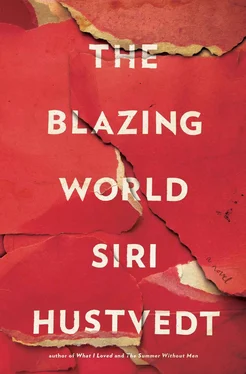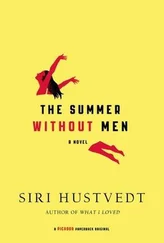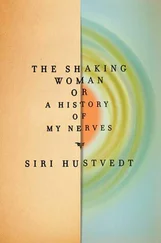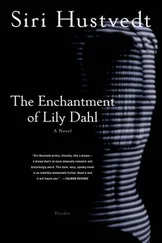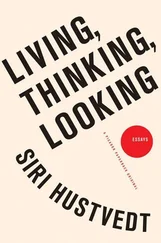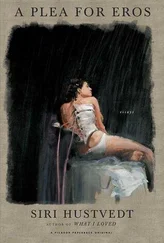Many of the journals are essentially notes on her reading, which was voluminous and darted in and out of many fields: literature, philosophy, linguistics, history, psychology, and neuroscience. For unknown reasons, John Milton and Emily Dickinson shared a notebook labeled G. Kierkegaard is in K, but Burden also writes about Kafka in it, with several passages on cemeteries as well. Notebook H, on Edmund Husserl, has pages on Husserl’s idea about “the intersubjective constitution of objectivity” and the consequences of such an idea on the natural sciences, but also tangents on Maurice Merleau-Ponty, Mary Douglas, and a “Fantasy Scenario” on artificial intelligence. Q is devoted to quantum theory and its possible use for a theoretical model of the brain. On the first page of Notebook F (for female , apparently), Burden writes, “Hymns to the Fair Sex.” Page after page of quotations follow. A small sample will suffice to give the flavor. Hesiod: “Who trusts a woman, that man trusts a swindler.” Tertullian: “You [woman] are the devil’s gateway.” Victor Hugo: “God became man, granted. The devil became a woman.” Pound (Canto XXIX): “The female / Is an element, the female / Is chaos, an octopus / A biological process.” Along with these examples of blatant misogyny, Burden had stapled dozens of newspaper and magazine articles onto a single page with the word suppressed written on it. There was no common theme to these miscellaneous pieces, and I wondered why they had been lumped together. And then it dawned on me that what they shared were lists. Every article included a list of contemporary visual artists, novelists, philosophers, and scientists, in which no woman’s name appeared.
In V, Burden also quotes scholarly books, with and without citation. I found this quotation: “The ‘woman-as-monster’ image — with women depicted as snakes, spiders, extraterrestrials, and scorpions — is very common in boys’ literature, not only in the United States but also in Europe and Japan (see T, p. 97).” The parenthetical reference is to Burden’s own Notebook T, for teratology , the study of monsters, which, as Burden explains on its first page, is “the category that is not a category, the category to hold what can’t be held.” Burden was preoccupied by monsters and collected references to them in both science and literature. On page 97 of Notebook T, Burden quotes Rabelais, whose comic monsters changed the face of literature, noting that Gargantua is not born through the usual orifice: “Thanks to this unfortunate accident there took place a weakening of the uterus; the child leapt up through the Fallopian tubes to a hollow vein and, scrambling across the diaphragm to the upper arm where this vein divides in two, he left the fork and crawled out through the left ear” (Book I, Chapter 6). Immediately after this, she writes, “But the monster is not always a Rabelaisian wonder of hearty appetites and boundless hilarity. She is often lonely and misunderstood (see M and N).”
Two densely filled notebooks (M and N) treat the work of Margaret Cavendish, the Duchess of Newcastle (1623–1673), and the materialist organicism she developed as a thinker in her maturity. These two notebooks, however, also discuss the work of Descartes, Hobbes, More, and Gassendi. Burden links Cavendish to contemporary philosophers such as Suzanne Langer and David Chalmers, but also to the phenomenologist Dan Zahavi and the neuroscientist Vittorio Gallese, among others. After reading the passages in question, a colleague of mine in neurobiology, Stan Dickerson, who had never heard of either Burden or Cavendish, declared Burden’s argument “a bit wild but cogent and learned.”
Despite the fact that Cavendish lived in the seventeenth century, she served Harriet Burden as an alter ego. During her lifetime, the Duchess of Newcastle published poetry, fiction, and natural philosophy. Although a few people defended and admired her work at the time — most notably her husband, William Cavendish — the duchess felt brutally constricted by her sex and repeatedly articulated the hope that she would find readers and acclaim in posterity. Snubbed by many with whom she would have liked to engage in dialogue, Cavendish created a world of interlocutors in her writing. As with Cavendish, I believe that Burden cannot be understood unless the dialogical quality of her thought and art is taken into consideration. All of Burden’s notebooks may be read as forms of dialogue. She continually shifts from the first person into the second and then to the third. Some passages are written as arguments between two versions of herself. One voice makes a statement. Another disputes it. Her notebooks became the ground where her conflicted anger and divided intellect could do battle on the page.
Burden complains bitterly about sexism in the culture, the art world in particular, but she also laments her “intellectual loneliness.” She broods on her isolation and lashes out at her many perceived enemies. At the same time, her writing (like Cavendish’s) is colored by extravagance and grandiosity: “I am an Opera. A Riot. A Menace,” she writes in an entry that directly discusses her spiritual kinship to Cavendish. Like Cavendish, Burden’s desire for recognition in her lifetime was ultimately transmuted into a hope that her work would finally be noticed, if not while she was alive, then after her death.
Burden wrote so much and so broadly that my dilemma as an editor turned on the crucial question: What do I put in and what do I leave out? Some of the notebooks contain esoteric material unintelligible except to those well versed in the history of philosophy or science or art history. I found myself stumped by some of her references, and even after I had traced them, their meanings in the context of her writing often remained obscure to me. I have focused my attention on Maskings and included only passages that directly or indirectly relate to the pseudonymous project. The first excerpts from Burden’s journals in this volume were taken from Notebook C ( Confessions? Confidences ?), the memoir Burden began writing sometime in early 2002 after her sixty-second birthday, but which she appears to have abandoned to return to her other notebooks and a more fragmentary style.
Nevertheless, I found it expedient to try to construct a story of sorts out of the diverse material Burden left behind. Ethan Lord suggested I gather written or oral statements from people close to his mother to give additional perspectives to Maskings , and I agreed. I then decided to solicit information from those who knew about or had somehow been involved in the pseudonymous project.
Since the Grace exhibition, interest in Harriet Burden’s work has grown exponentially, despite the fact that controversy still surrounds her “masks,” especially her involvement with the last and by far the most famous artist of the three, Rune. Although there is a consensus that Burden made Tish’s The History of Western Art as well as Eldridge’s Suffocation Rooms , there is little agreement about what actually happened between her and Rune. There are those who believe Burden is not responsible for Beneath or contributed very little to the installation, and others who are convinced that Burden created it without Rune. Still others argue that Beneath was a collaborative effort. It may not be possible to determine absolutely who generated that work, although it is clear that Burden felt betrayed by Rune and turned against him. She also became convinced he had stolen four works from her studio, although no one can explain how the theft could have happened. The building was locked and protected by an alarm system. Windows , a series of twelve pieces, was sold as artwork by Rune. The dozen boxes resemble constructions made by Burden and it is at least possible that four of them were hers, not Rune’s.
Читать дальше
